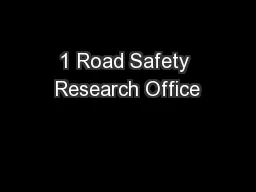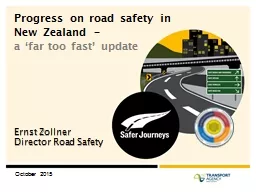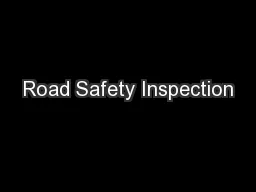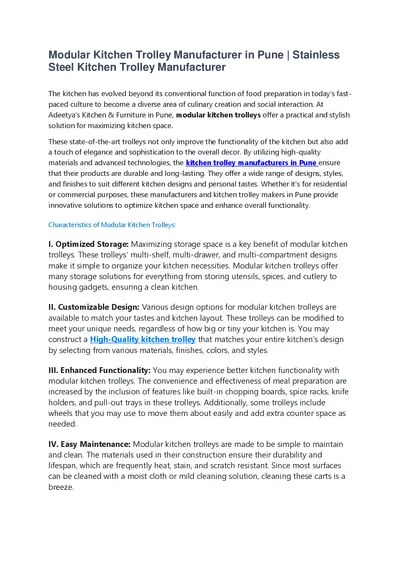PPT-1 Road Safety Research Office
Author : sherrill-nordquist | Published Date : 2018-02-11
Ministry of Transportation of Ontario CARSP Conference 2016 Learning to drive Does structured education make for safer drivers The Driving lifecycle 2 Younger Older
Presentation Embed Code
Download Presentation
Download Presentation The PPT/PDF document "1 Road Safety Research Office" is the property of its rightful owner. Permission is granted to download and print the materials on this website for personal, non-commercial use only, and to display it on your personal computer provided you do not modify the materials and that you retain all copyright notices contained in the materials. By downloading content from our website, you accept the terms of this agreement.
1 Road Safety Research Office: Transcript
Download Rules Of Document
"1 Road Safety Research Office"The content belongs to its owner. You may download and print it for personal use, without modification, and keep all copyright notices. By downloading, you agree to these terms.
Related Documents














